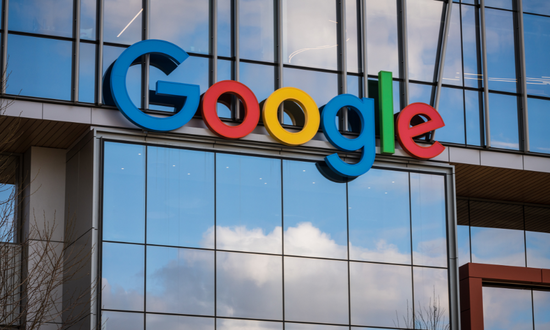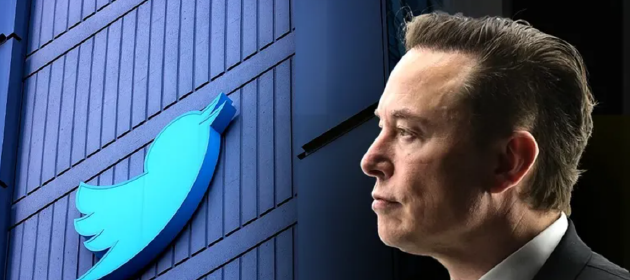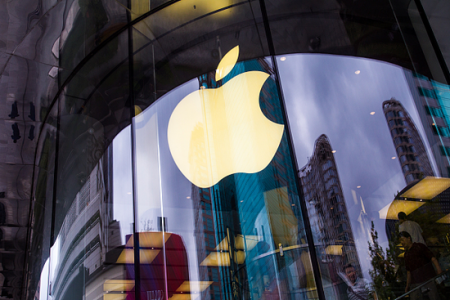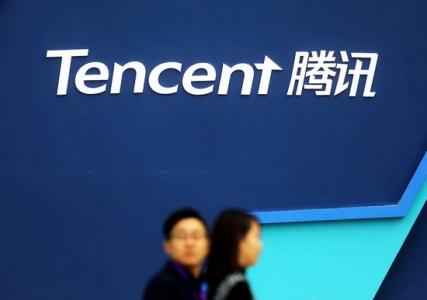your current location is:Home > Finance > depthHomedepth
Silicon Valley cools down into autumn: big soil and wealth factories have no more food

After a brief warm sun, the temperature plummeted, and the Silicon Valley quickly entered autumn. It's the earnings season of major technology companies again. In this season that should be harvested, Silicon Valley feels a bleak chill, which has never been seen in the past ten years.
Even when the new crown epidemic broke out in 2020, even when all parts of the United States were locked down and the economy was greatly contracted, Silicon Valley technology companies were still the growth engines of the US economy. They have handed over impressive financial reports, and the stock market value has led the U.S. stock market.
But after entering 2022, the hot stock market and the feast of giants have become the past tense. In the past two years, the flood of liquidity, the supply chain crisis caused by the epidemic, and the soaring energy prices caused by the war, driven by many factors, U.S. inflation has soared, hitting a 40-year high.
In the face of severe inflationary pressures, the Federal Reserve has raised interest rates three times in a row this year, and the tightening rate is unprecedented in history. As the Federal Reserve slammed on the brakes, the U.S. economy and the stock market also cooled down abruptly. The stock market turned around and fell sharply, and the shadow of a "hard landing" and economic recession lingered. The strengthening of the US dollar caused by continuous interest rate hikes has also caused a lot of loss of overseas business revenue of multinational giants.
This week's financial results of Internet giants such as Google, Microsoft and Meta once again sent an unmistakable signal to the market: the US economy is cooling down significantly, and even Silicon Valley tech giants must face the reality and actively prepare for the winter. The high-growth period of the past decade of low interest rates, low inflation, and low energy prices has come to an end in Silicon Valley.
YouTube revenue falls for first time
Google's earnings report on Tuesday was disappointing. In the third quarter of this year, Google's parent company Alphabet posted revenue of $69.1 billion, up 6.1 percent from a year earlier, but below Wall Street's forecast of 9 percent and the slowest growth rate in nine years. In addition, net profit for the quarter fell 14% year-on-year to $16 billion, also below market expectations.
As a giant with a dominant share of the Internet in search, navigation and video, Google's earnings are widely regarded as an important barometer for online advertising. Before Google released its third-quarter earnings report, the market already had psychological expectations, and this quarter's performance may decline significantly.
But the final earnings report surprised investors. Affected by this, Google's shares fell more than 5% after the market and fell more than 6% before the market on Wednesday. Surprisingly, revenue growth in Google's core search advertising business has slowed sharply, and even YouTube advertising revenue, the most stable cash cow business, has declined for the first time in history.
YouTube advertising revenue of $7 billion in the quarter was lower than market expectations of $7.4 billion; it fell 1.9% year-on-year, which was never seen before. Google search advertising rose 4% to $39.5 billion in the quarter, but missed consensus estimates of $41 billion.
Google's parent company CFO Ruth Porat admitted candidly in an analyst meeting after the earnings report that the slowdown in Google's advertising platform and video advertising is because advertisers have tightened their ad spending, reflecting their concern Concerns about future uncertainties are mounting.
Google’s chief commercial officer and senior vice president, Philpp Schindler, specifically explained that finance is the industry where advertising has fallen the most, with advertising in the insurance, lending and cryptocurrency industries appearing to be nearing a standstill. He also highlighted the negative impact of a stronger dollar on company performance.
After the earnings report, Google CEO Sundar Pichai said at an analyst meeting, "It will respond to the economic environment. We are evaluating all large-scale projects to ensure that we have the right planning and the right resources. Configuration and Path Correction". The market interprets his statement as more cost-cutting and even layoffs at Google.
Social advertising shrinks more significantly
Of course, the momentum of advertisers to tighten their budgets does not only affect Google's search and video advertising areas, but the downward trend in social advertising is even more pronounced. Snap and Meta's results over the past week have been even more subdued. Twitter, which will soon become Musk's personal asset, will report earnings next week.
A report from advertising market research firm Standard Media predicts that U.S. ad spending fell for the fifth consecutive month in September, down 5% at the same time. In the third quarter, channel advertising spending fell by 6%, involving cable TV, social advertising, search advertising and many other areas.
Snap reported third-quarter revenue on Thursday that fell short of expectations, with growth falling to single digits for the first time, and its net loss quadrupled to $360 million. Affected by this, the stock plunged 27% after hours. Meta’s revenue in the financial report announced on Wednesday was even more appalling. The revenue for the quarter was US$27.714 billion, down 4% year-on-year and 3.9% month-on-month, and the net profit was US$4.395 billion, down 52% year-on-year. Meta shares fell nearly 20% after the earnings report.
Perhaps compared to Google, Meta is under greater pressure from the capital market. Zuckerberg’s strategy of “comprehensive transformation of the metaverse” that began last year has not been recognized by Wall Street. The market value has dropped by nearly $600 billion within a year, and the current market value has even fallen back to the level of 2017, which is less than 3,000. One hundred million U.S. dollars.
Even Microsoft, which focuses on cloud services and the enterprise market, has experienced a significant deceleration in revenue growth. Microsoft's third-quarter earnings report released on Tuesday showed that revenue for the quarter rose 11 percent to $17.6 billion, the slowest increase in the past five years; net profit fell 14 percent in the quarter.
Microsoft has previously given investors a shot, citing possible adverse effects of a stronger U.S. dollar on the company's performance. If currency fluctuations are excluded, Microsoft's revenue should have increased by 16% in the quarter, maintaining a normal pace of growth; the stronger dollar has brought at least a $2.3 billion loss to Microsoft's revenue. But after the earnings report was released, Microsoft's stock price was also not spared, falling more than 6% after the market.
The market value of the six giants has shrunk by three trillion
Wall Street's confidence in Silicon Valley is also reflected in the stock price. In the past year, Google's parent company Alphabet has lost nearly $700 billion in market value, becoming the giant with the largest market value shrinkage, while Microsoft, Meta and Amazon have lost more than $500 billion in market value. Add in Tesla and Netflix, and the six tech giants have lost more than $3 trillion in market value in a year.
After Amazon announced its earnings on Thursday, its stock price fell 16% after the market. Although the e-commerce and cloud computing giant’s third-quarter revenue increased by 15% year-on-year, its net profit decreased by 4% year-on-year, and its fourth-quarter revenue forecast was low. on market expectations.
Apple also announced its third-quarter results today. The global consumer electronics giant continued its growth momentum since the epidemic and hit a new high in its earnings report. It was not significantly affected by the decline in global smartphone sales. Apple’s overall revenue rose 8% in the quarter to a new high of $90.1 billion, beating market expectations. Net profit for the quarter was $20.7 billion, also hitting a new self-high.
However, there are hidden dangers in Apple's dazzling financial report. Although the core iPhone business revenue increased by 9.7% year-on-year, it was lower than market expectations. According to IDC, global smartphone shipments may fall by 6.5% this year. Revenue from the services business, another growth driver that Apple values most, also fell short of market expectations in the quarter. Apple shares were largely flat after hours.
Compared with the sharp decline in the market value of several other giants, Apple, which has the highest market value in the U.S. stock market, has only dropped by $35 billion in market value in the past year, and still maintains a market value of more than $2.4 trillion, becoming the technology company with the most resilient stock price.
 Snap directly shuts its San Francisco office
Snap directly shuts its San Francisco officeSilicon Valley starts layoffs
Since the financial crisis in 2008, Silicon Valley has maintained a stable and high-speed growth momentum in the past 10 years. Abundant funds brought by low interest rates, through channels such as the open market and venture capital, continue to support Silicon Valley's technology giants and startups. The hot U.S. stock market has attracted batches of technology companies to go public, and has also created batches of upstarts. Even after the outbreak of the new crown epidemic, when the U.S. economy was at a standstill, several Silicon Valley tech giants were still hiring aggressively and seized the opportunity to compete for talent.
However, as the future economic prospects are in confusion, the performance growth of the major giants has stagnated or even declined. They have also begun to adjust their talent recruitment and reserve policies, and even began to lay off workers on a large scale. Throttling has become the theme of Silicon Valley this year. It's a chill that hasn't happened in more than a decade.
In May of this year, Netflix, which suffered a user decline for the first time and its stock price plummeted by one-third, began laying off workers and slashed the size of its animation and sales divisions. More than 300 employees lost their jobs as a result. In August, Snap announced that it was laying off 20% of its global workforce, dismissing 1,200 employees, and directly closing its entire San Francisco office.
In October, Microsoft made layoffs in departments such as Xbox, and the total number of layoffs may exceed 1,000. Although Musk retracted Tesla’s remarks about laying off 10% of Tesla’s global workforce, Tesla has not stopped the pace of layoffs, and still cut more than 200 people from the Silicon Valley autopilot team.
Chip giant Intel has also been revealed that it may announce layoffs in the near future, and the total number of layoffs may be as high as 1,000. IDC expects global PC shipments to decline by 15% year-on-year in the third quarter of this year, while Intel now expects global PC shipments to decline by 14%-17% this year.
Intel's just-announced third-quarter revenue fell 20% year-on-year and net profit fell 85%, but both indicators were flat or higher than market expectations. However, Intel's current quarter revenue forecast is also lower than market expectations. After the earnings report, Intel's CFO announced spending cuts of up to $10 billion over the next three years. Intel shares rose 5% after hours on the news of the throttling.
 Google under pressure to cut jobs
Google under pressure to cut jobsThe landlord's house has no surplus
For more than a decade, Google and Meta have been Silicon Valley's most eager to recruit talent. Generous salaries and all-encompassing benefits make them the most desirable employers for programmers. Even during the epidemic, the two giants, instead of shrinking in size, are expanding against the trend.
Not long ago, the two giants were expanding massively, hiring new people in full swing. Google CFO Borat said that Google hired 12,800 employees in the third quarter, and the current total number of global employees is 186,800, an increase of nearly a quarter year-on-year. At the end of the second quarter of this year, Meta’s total global workforce was 78,000, an increase of 30% year-on-year.
But now, with the gloomy earnings report, the stock price has tumbled. The two giants are facing unprecedented cost-cutting pressure and have to face the most realistic option: the first large-scale layoffs in the company's history.
Altimeter, an important investor in Meta and a hedge fund giant, issued an open letter this week, urging Zuckerberg to focus on interception, reduce spending by at least $5 billion a year, limit the annual investment in the Metaverse to $5 billion, and lay off at least 20% of employees . Altimeter wrote in the open letter, "Meta needs to rebuild the confidence of investors, employees and the technology community to attract, motivate and retain the best talent in the world. In short, Meta needs to be leaner and more focused."
In fact, Meta has been preparing for layoffs since the third quarter. In late September, Zuckerberg publicly acknowledged plans to slash budgets, including freezing hiring, reducing budgets for most teams, reorganizing some teams, and optimizing resource allocation. According to insiders, Meta's human resources department has started to prepare a list of PIP (performance improvement), which may have up to 10% of employees at risk of being fired.
Although Google has not publicly acknowledged layoffs, only a temporary slowdown in hiring, the company's executives' position on cost control has become very clear. Google CFO Borat said that Google may hire more than 6,000 employees in the fourth quarter, which is equivalent to half of the third quarter.
Starting last week, Google suspended recruitment for half a month, and each project team re-evaluated the current human resource needs. Google CEO Pichai explained, "When you're in growth mode, it's hard to find the time and opportunity to recalibrate that you need, and the current period gives us that opportunity."
When business and performance are booming, Google allows employees to freely arrange 20% of their working time for projects outside their own work. This is also seen as an important means for Google to keep innovating. However, with the slowdown in Google's performance growth, the stagnation of overall recruitment, and the urging of various teams to improve productivity, Google has also completely bid farewell to the once proud "80/20 rule".
Google CEO Pichai now emphasizes that he wants employees to increase productivity by 20%, "to show a greater sense of urgency, higher concentration, and greater hunger than 'sunshine days'."
Previous:Before the storm, CEOs, CFOs all slipped away
Next:Musk builds an overseas version of WeChat, Facebook is the most injured
related articles
Article Comments (0)
- This article has not received comments yet, hurry up and grab the first frame~













